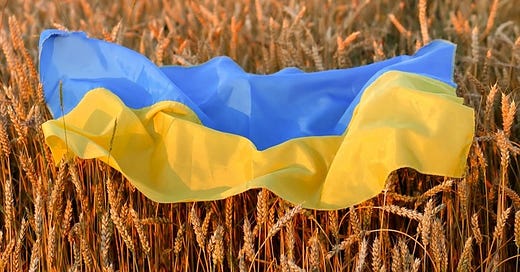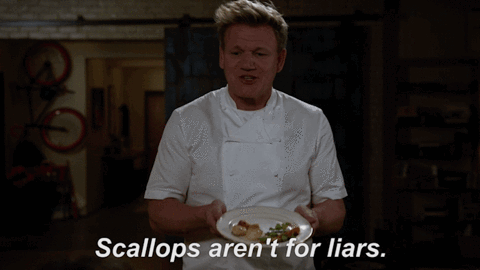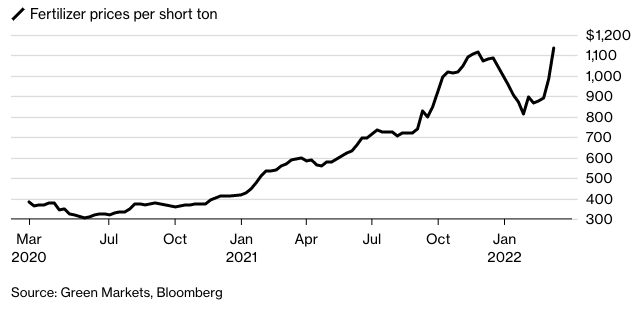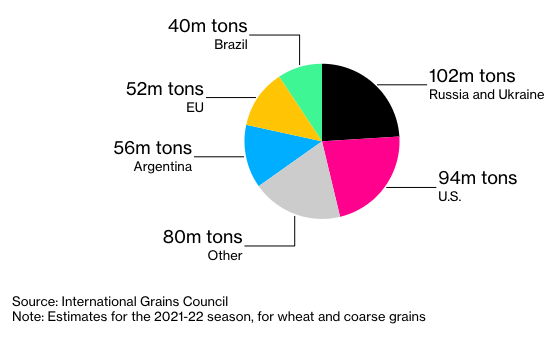🍙 [SPECIAL PUBLICATION] What wars mean to F&B Business?
Looking into how troubled times could be impacting your business too... food supply, pricing, sanctions, support,...
In this very special newsletter (outside the usual schedule, and in a different format), I wanted to touch a bit on what’s happening in Ukraine and see how this is impacting the whole food and beverage industry.
Of course, this post is not about politics, and it is probably not helping the ongoing conflicts, however, I was curious to see how troubled times - yes we all add quite a few for the past years - can push us to yet again, be resilient and learn from others, by applying a few lessons to our business.
So, what impact could conflicts have on your F&B business?
Hi, I’m Greg, founder of NextStep [F&B] Studio, we help brands and companies to implement new F&B trends & innovations, coming from China and Asia, in their business to stay ahead and be ready for what’s to come.
The FoodTech Confidential Newsletter is my way to share what’s shaking the Food and Beverage industry with F&B professionals, FMCG experts, Tech entrepreneurs, and Investors with a focus on China, and, Asia.
📣 Spread a little 💟 to support me and leave a comment 💬 to start a conversation!
We will be talking about :
🚚 The impact on food supply
📈 The rise in pricing for end consumers
🚀 The disruption that is impacting also the food tech startups
👮🏽 The impact on a market being sactioned
🌅 Then, what comes after such a conflict
💪 Many F&B professionals are bringing support as they can
Let’s dig in !
What wars mean to F&B Business?
1 - 🚚 Food Supply Broken
When a conflict is involving parties that are key players in the global production of some ingredients, we can expect some disruption. A basic “offer vs demand” situation.
At the ingredient level, as we all know by now, “Ukraine and Russia are both major exporters of some of the world's most basic foodstuffs, together accounting for about 29% of global wheat exports, 19% of world corn supplies, and 80% of world sunflower oil exports.” and here is a list by Reuters of every line of products that are impacted.
But also everything that goes into growing food is getting pricier. For example, at the fertilizer level, “Russia exports crop nutrients as well as natural gas, which is critical for producing nitrogen-based fertilizers. Yara International [Norwegian fertilizer maker] said that in total, 25% of the European supply of the key crop nutrients nitrogen, potash, and phosphate come from Russia.” Also, higher shipping costs, energy inflation, extreme weather, and labor shortages have made it harder to produce food.
The direct consequence, as reported by the World Food Program (WFP), is that likely only the most privileged part of the world's population gets access to enough food since food, fuel, and shipping costs will keep on rising. Grains are the staples that feed the world, with wheat, corn, and rice accounting for more than 40% of all calories consumed. And “while high prices may have a short-term positive impact on profit, they would mean an unsustainable food system, leading to starvation and conflict in the long term.”, Yara said. And, according to the International Grains Council, supply is shrinking: grain stockpiles are poised for a fifth straight annual decline.
Another consequence that definitely leads us to the next point on “2 - Food Price Rising”, is that countries that are heavily relying on foreign supply are staking up, triggering heavy buying in Turkey for example. And Indonesian supermarkets have already restricted cooking oil purchases to one pack per shopper and family.
2 - 📈 Food Price Rising
Ukraine, also known as “Europe’s breadbasket,” exports mostly to North Africa, the Middle East, South Asia, as well as other European countries, and “this crisis is coming at a time when international food markets are already struggling due to the fallout from the COVID-19 pandemic”, said Adrian Herrera, chair of the Agricultural Market Information System (AMIS) of the G20 countries.
Interestingly enough, Forbes reports that Ukraine is a leading supplier of organic oilseed and grain to the US organic chicken industry, (which represents about 6% of all the chicken sales in the country), and neither US nor Canadian farmers are in a position to fill the gap.
And basically, we can easily expect that the whole organic industry will be affected. “Organic will see price spikes,” said Alison Grantham of Grow Well Consulting. “It could hurt the overall organic market size. People are dealing with so much inflation already. It’s a choice, whether you buy organic or not organic chicken. We might see some shrink in organic poultry. I don’t know how much the consumer can bear.”
NutrionInsight reported that supply chain disruptions and inflation have sent world food prices peaking at a ten-year high.
3 - 🚀 FoodTech Disrupted
Not only the food production is affected but much of the technology that enables and optimizes that production will also be impacted. Beyond the fact that Ukraine and Russia are major producers of ingredients, they are also leading exporters of different minerals, metals, natural gas, and several other crucial components to the manufacture of semiconductors.
“These are all key components for tech-enabled agriculture; enabling connectivity between the sensors, smartphones, and machinery that allow modern farmers to monitor, manage, and optimize their operations; to boost their yields, cut long-term costs, and enhance their incomes”. said Agfunder
The impact on the human capital side is also important since Ukraine “has become something of a software development hub, with a well-educated, technical workforce that comes at a lower labor cost than much of the rest of Europe. As a result, many tech startups outsource their development and engineering to the country.”


4 - 👮🏽 Markets Sanctioned
Consumer giants including McDonald’s, Coca-Cola, and Starbucks are halting business in Russia due to the invasion of Ukraine. “The moves by [these companies] come after mounting pressure on companies to act over the war in Ukraine. All three firms said they would continue to pay their staff”, reported BBC.com. Heineken also stopped beer production and sales in Russia, while RBI’s Burger King is currently keeping its stores open, due to the fact they are mostly operated by franchisees with which their agreement cannot easily be changed. RBI has however committed to redirecting some of its profits to support Ukrainian refugees.
Pepsi, which has a much larger presence in Russia than rival Coca-Cola, hast stopped the production and sale of Pepsi and other global brands in Russia and suspending capital investments and advertising. But the company, which now employs 20,000 people there, said it would continue to offer other products. "As a food and beverage company, now more than ever we must stay true to the humanitarian aspect of our business," boss Ramon Laguarta said. "That means we have a responsibility to continue to offer our other products in Russia, including daily essentials such as milk and other dairy offerings, baby formula, and baby food." This applies to Nestle and Danone as well who are suffering a mounting backlash from consumers for staying in operation in Russia.
On the other side of the sanction, there is the market of the country under attack. Most of those brands and many others have also stopped operations due to the conflict. Giant dairy firms like Danone and Lactalis have stopped production in some of the factories but have maintained a few, in order to respond to the growing shortage of milk and infant formula.
Here is a growing list of food and beverage firms who are concerned.
5 - 🌅 Where do we go from here ?
With consumers looking for cheaper options (48% of respondents said so, and 26% said they switched to a retailer’s own-label version of the same product), companies will need to work harder to keep them coming. Brands will have to demonstrate their added value (with high-quality ingredients, proven efficacy, sustainability, cobranding,…) in order to mitigate the impact of price increase on purchasing behavior. “Companies in the well-being sector have a good opportunity now to demonstrate that they can enhance the quality of people’s lives during these tough times, such as dietary supplements, delivering great value nutrition to keep people healthy and build resilience,” said NutritionInsight.
However, like David Frum, writer for The Atlantic, says in his article “The Food War”, : “Our world is much more resilient than it was even a generation ago, especially with regard to food. The food shock of 2022 is not a good-news story. The news is bad. But our “bad” is less bad than ever before.” David continues: “The upheaval will touch every food consumer on Earth, even those living in food-secure countries such as the United States. Food prices are set in an efficient global markets. All countries face similar prices, whether they are sellers into those markets or buyers from those markets. If the price goes up for anyone, it goes up for everyone.”
David FRUM is arguing how things are bad for some and better for others in the food world. For example, India was often named as most likely doomed with starvation and economic crash in many reports… but India is also the world’s second-largest producer of wheat in 2022, accounting for more than 13 percent of all output.
Also “Higher prices for food consumers mean higher incomes for food producers. In most of the world, consumers hugely outnumber producers. There is one region, however, where producers remain so numerous that higher prices can improve the livelihoods of millions: sub-Saharan Africa.” Higher prices could encourage African farmers to adopt more advanced seeds and other modern methods. They could prod governments to invest more in rail and roads in order to move crops to market, and to clarify property laws in order to support commercial farms that produce for the international marketplace. Sub-Saharan food output grew twice as fast from 2000 to 2018 as it did in the 1980–99 stretch. That boom was driven by higher food prices, especially in the peak years of 2006 to 2013, according to a 2021 study.” Read more about it here.
6 - 💪 F&B professionals are doing what they can to help
Within hours of Russia’s invasion of Ukraine, restaurants and relief organizations across the globe had already sprung into action. In a show of solidarity with the Ukrainian people, these businesses and nonprofits have been working around the clock to raise money and feed those who have been impacted by the violence.

Many startups in Europe have been working on building tech solutions to help refugees by collecting food, clothing or medicines, providing transportation or a place to stay and even help finding paid jobs for tech workers.
Good Meat board member and plant-forward chef José Andrés has mobilised his non-profit World Central Kitchen (WCK) platform. Setting up on the Ukraine-Poland border, the organisation served over 4,000 meals in just 18 hours.
Many “Russian-themed” restaurants and bars have been showing support by changing name, taking russian produced and branded spirits off the menu (while USA Today reminded us that only about 1% of the vodka in the US is actually imported from Russia”).
World’s 50 Best is moving its annual award ceremony, set for July 2022, from Moscow to London.
Several fundraisers were also organised, like in Chicago.
But FoodTank.com has put together a pretty good list of every main organizations and acctions taking place around the world where you too could get involved.
🔥 That’s it for now 🔥
Next week I will get back to the usual menu bringing more innovations and trends from China and Asia !
I hope you liked this content, and if you have anything to add, let’s start the conversation, drop me a comment 💬, or just reply to this email directly.
As you can imagine, while doing my research, I am finding a lot more things that didn’t make the cut here (and some are going straight to LinkedIn).










